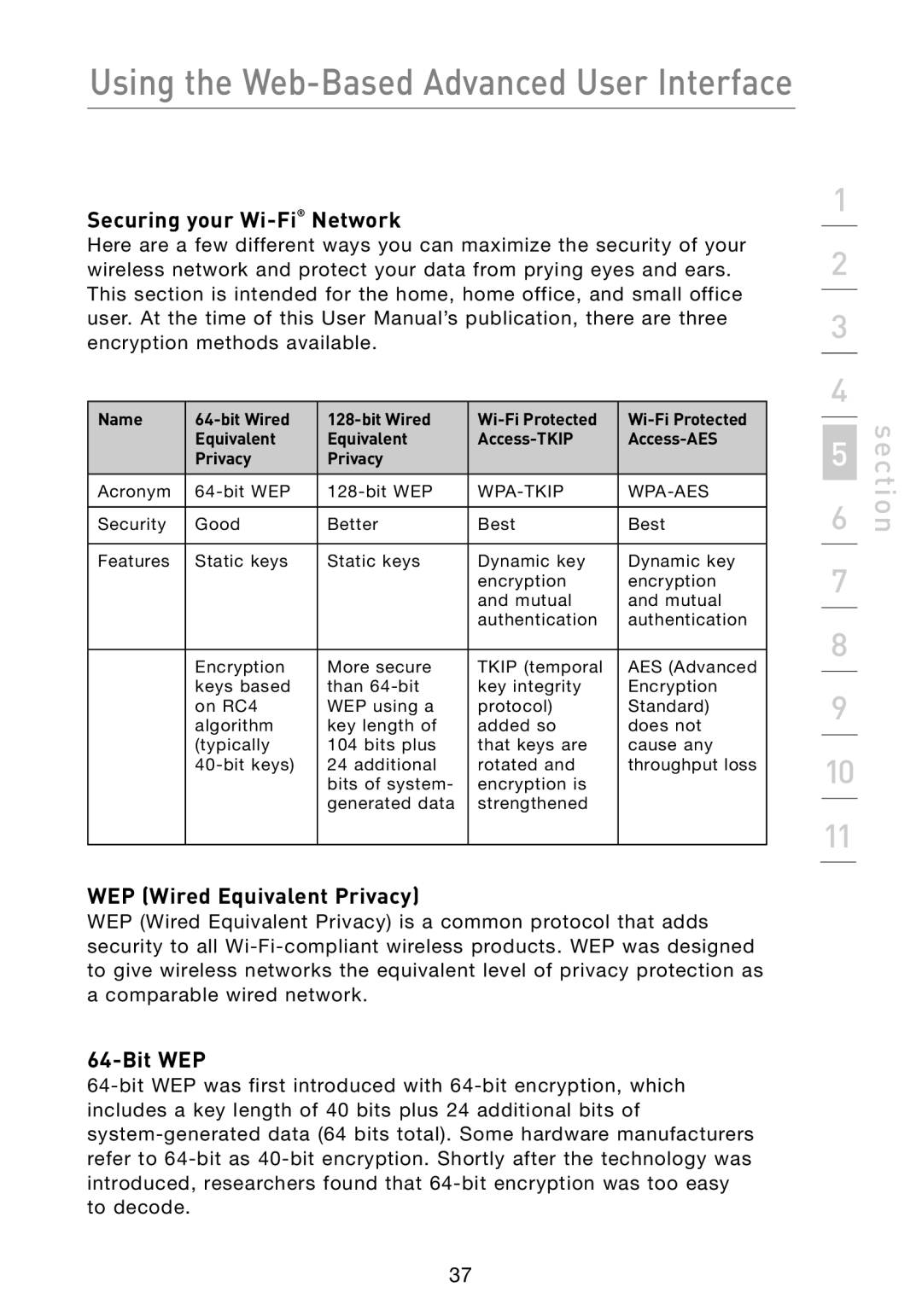
Using the Web-Based Advanced User Interface
Securing your Wi-Fi ® Network
Here are a few different ways you can maximize the security of your wireless network and protect your data from prying eyes and ears. This section is intended for the home, home office, and small office user. At the time of this User Manual’s publication, there are three encryption methods available.
Name | ||||
| Equivalent | Equivalent | ||
| Privacy | Privacy |
|
|
Acronym |
|
| ||
Security | Good | Better | Best | Best |
Features | Static keys | Static keys | Dynamic key | Dynamic key |
|
|
| encryption | encryption |
|
|
| and mutual | and mutual |
|
|
| authentication | authentication |
| Encryption | More secure | TKIP (temporal | AES (Advanced |
| keys based | than | key integrity | Encryption |
| on RC4 | WEP using a | protocol) | Standard) |
| algorithm | key length of | added so | does not |
| (typically | 104 bits plus | that keys are | cause any |
| 24 additional | rotated and | throughput loss | |
|
| bits of system- | encryption is |
|
|
| generated data | strengthened |
|
WEP (Wired Equivalent Privacy)
WEP (Wired Equivalent Privacy) is a common protocol that adds security to all
64-Bit WEP
1
2
3
4
6 | section |
5 |
|
7
8
9
10
11
37
